A stove or hob is the heart of every kitchen, where culinary magic happens. Choosing the perfect hob not only enhances your cooking experience but also brings greater convenience, safety, and the joy of preparing delicious meals.
Read our stove and hob buying guide to find the ideal match for your kitchen.
1. Types of hobs
The market offers various types of hobs, each catering to different cooking styles and household needs. Understanding their unique features and benefits will help you select the perfect fit for your kitchen.
Gas hob
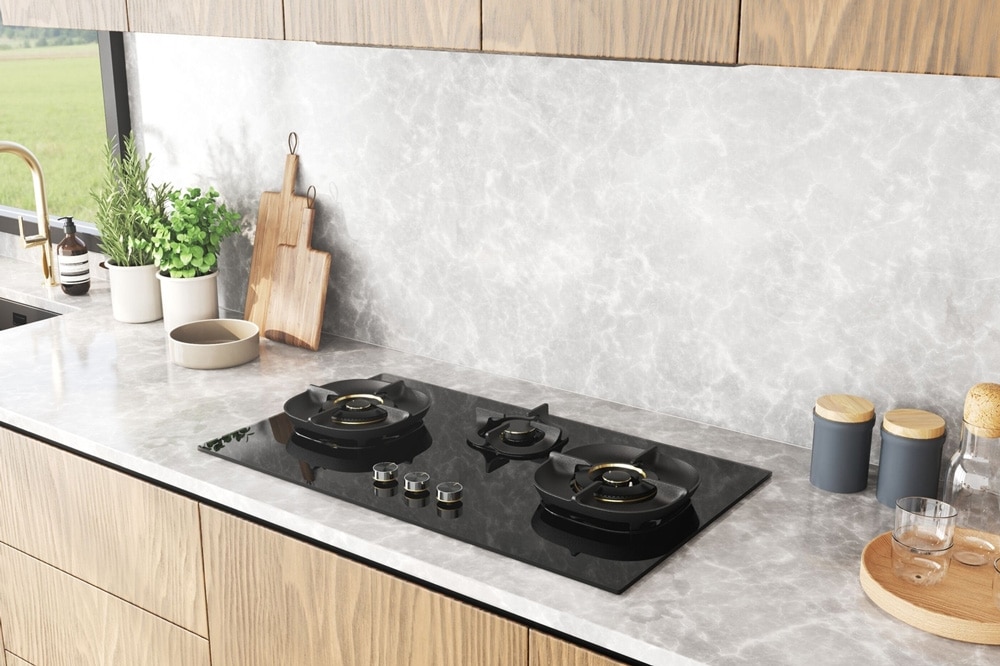
Gas hobs remain a classic choice for Malaysian kitchens. With their instant and precise heat control, they are ideal for traditional cooking methods and high-heat recipes like stir-frying.
Most types of cookware are compatible, making them a versatile option for families who enjoy a variety of cuisines.
Check out some of our gas stoves:
-
- StepFlame settings deliver precise heat control.
- FlameShield improves efficiency and results.
- High power burner is ideal for stir-frying.
-
- StepFlame settings deliver precise heat control.
- FlameShield improves efficiency and results.
- High power burner is ideal for stir-frying.
-
- FlameShield improves efficiency and results.
- High power burner is ideal for stir-frying.
- Flame failure cuts off gas supply for your safety.
Induction hob
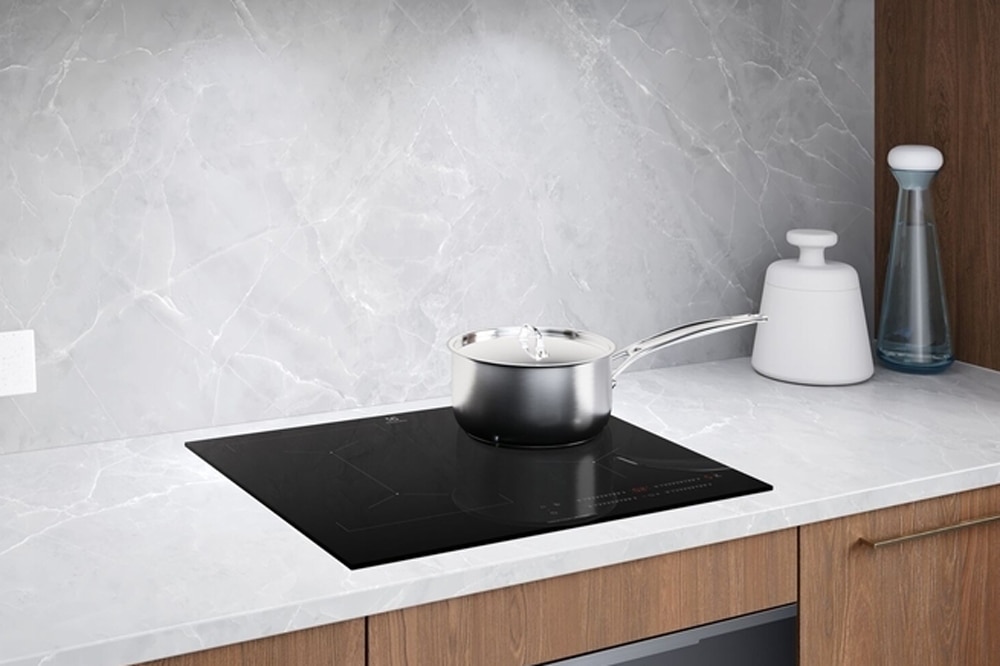
Induction hobs are renowned for their energy efficiency and safety features. They heat up quickly and offer a cool-to-touch surface, reducing the risk of burns. However, they require induction-compatible cookware. These hobs are perfect for modern homes that value sleek designs and eco-conscious cooking.
Find more helpful information in our article about Things you need to know about induction cooking.
Check out our induction cooktops:
-
- PowerBoost provides quick, intense heat.
- Induction is safe, fast, and energy efficient.
- Pot detection lights up the controls for the zone.
-
- SenseFry adjusts heat for even frying results.
- FlexiBridge adapts the cooking surface.
- PowerSlide from sear to simmer.
-
- PowerBoost provides quick, intense heat.
- Induction is safe, fast, and energy efficient.
- Pot detection lights up the controls for the zone.
Radiant/Electric hob
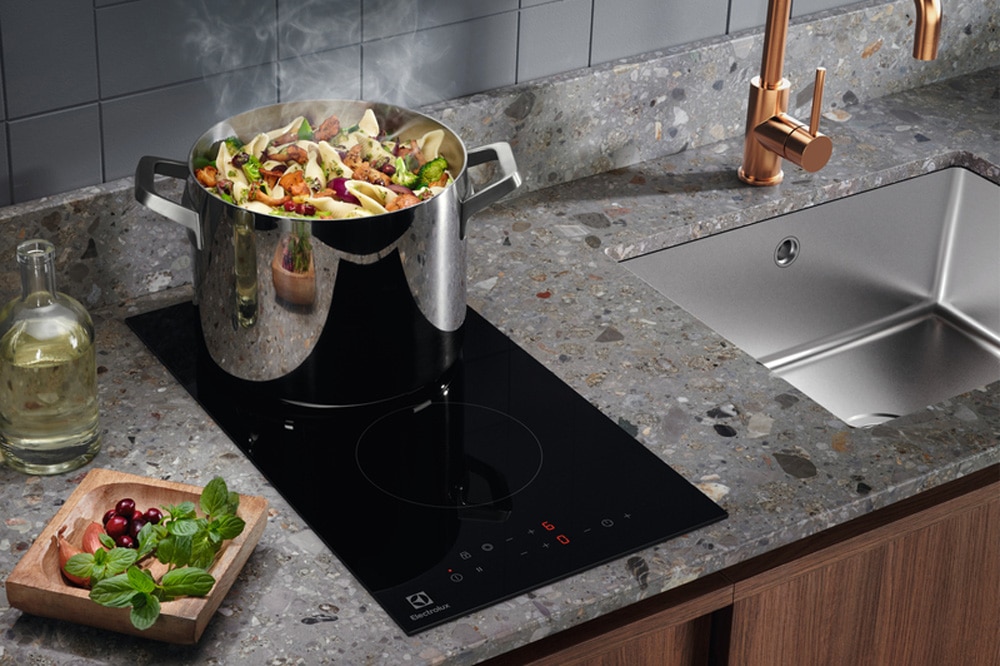
Radiant hobs, or electric hobs, are appreciated for their elegant, flat designs and steady heat distribution. They are compatible with any cookware and are easy to clean, making them suitable for households that prioritize aesthetics and minimal maintenance.
Discover our range of radiant stove:
-
- Power management prevents electrical outages.
- Touch controls deliver more professional results.
- Residual heat indicator helps to avoid accidents.
-
- Power management prevents electrical outages.
- Residual heat indicator helps to avoid accidents.
- Smooth glass surface makes cleaning easy.
-
- Use Auto heat-up to get cooking faster.
- AutoOff shuts off the hob if something is amiss.
- Pause your cooking at the touch of a button.
Comparison: Gas vs. Induction vs. Electric hobs
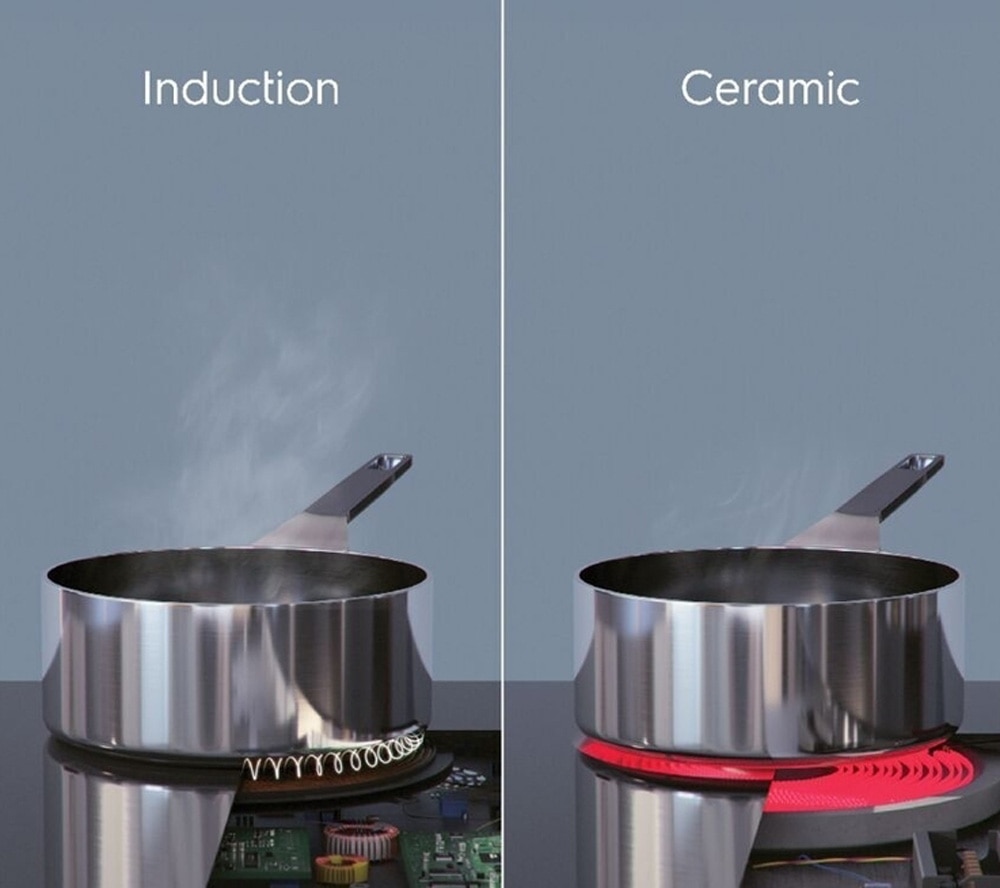
Choosing the right hob often depends on your cooking habits and kitchen needs. Here is a quick comparison:
| Feature | Gas hob | Induction hob | Electric hob |
| Heating speed | High | Very high | Moderate |
| Energy efficiency | Moderate | Very high | Moderate |
| Safety | Open flame risk | Cool surface, child lock | Heated surface risk |
| Maintenance | Moderate | Easy to clean | Easy to clean |
| Cost | Affordable | Higher upfront cost | Affordable |
Related reading: Electric vs gas stoves: What’s the right choice for you?
2. Key factors to consider when buying
Selecting the ideal hob involves more than just aesthetics. Detailed consideration of factors like size, installation, heat control, and energy efficiency ensure you make the right choice for your cooking needs.
Size and burners
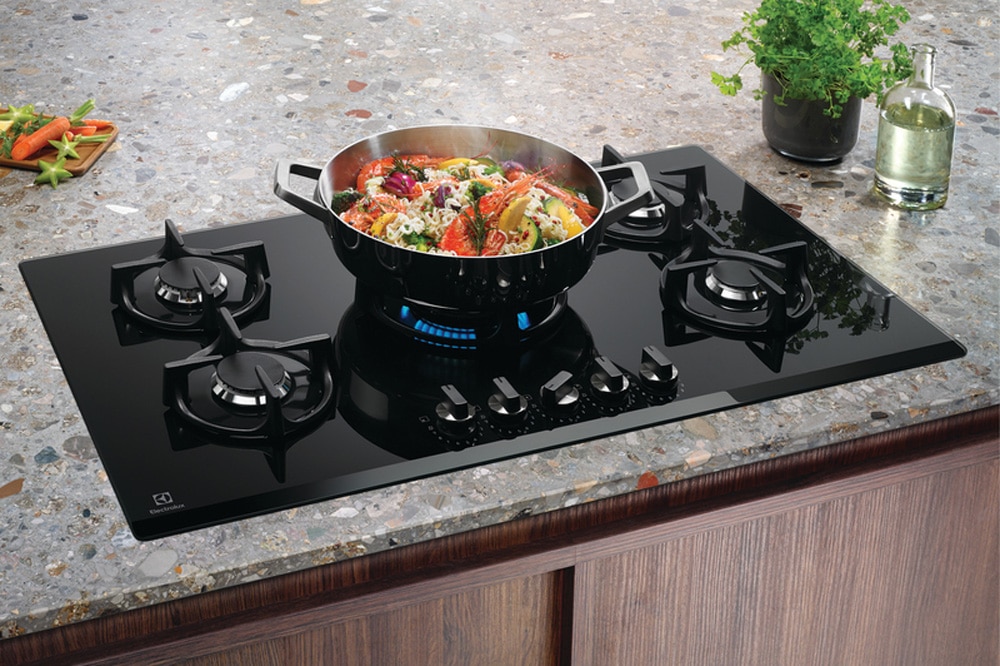
Choosing the right hob size and burner configuration is critical for meeting your cooking needs. Below is a guide to help you select the best option:
|
Configuration |
Best for |
Features |
|
2-cooking zone hob |
Singles or small households |
Compact size, easy installation |
|
3-4-cooking zone hob |
Medium-sized families |
Balance of multitasking and space-saving |
|
5+ cooking zone hob |
Large families or avid home chefs |
Accommodates oversized cookware |
Consider how many burners you’ll need based on the types of dishes you frequently prepare. For example, multi-course meals may require more burners, while minimalists can opt for a smaller setup.
Installation Types
The installation type plays a significant role in the aesthetics and functionality of your kitchen. Built-in hobs offer a seamless and modern appearance, integrating perfectly with countertops. These are ideal for contemporary kitchens and provide an uncluttered look.
Freestanding models, on the other hand, offer greater flexibility and are easy to move or replace, making them a practical option for rented spaces or traditional kitchens.
Heat Control and Energy Efficiency
Efficient heat control is crucial for precision cooking.
- Gas hobs: Technologies like StepFlame allow for precise flame adjustments, perfect for delicate dishes or high-heat stir-fries.
- Induction hobs: Provide unparalleled precision with adjustable power levels and fast transitions from boiling to simmering.
- Electric hobs: Offer steady and uniform heat distribution but may have slightly slower adjustments compared to gas or induction.
When it comes to energy efficiency, induction hobs lead the way, converting energy directly into heat with minimal wastage. Gas hobs, while less efficient, still offer excellent control for traditional cooking. Electric hobs strike a balance but may consume more energy over prolonged use.
By considering these factors, you can choose a hob that complements your kitchen and enhances your cooking experience.
3. Other considerations
In addition to the primary factors, a few extra details can further refine your decision-making process.
Features and innovations: Modern hobs come with a host of innovative features, such as , timer settings for precision cooking, and safety features like child locks and flame failure detection.
Price and budget: While budget is a crucial factor, it’s worth investing in a hob that offers long-term value. Premium models often include advanced features and energy efficiency, which can save money over time.
Maintenance and care tips: Proper care ensures the longevity of your appliance. Clean spills promptly to prevent stains or grease buildup. For gas hobs, regular checks of burners and gas lines are essential. Use non-abrasive cleaners and soft cloths for tempered glass surfaces to maintain their shine.
Reviews: Reading user reviews provides insight into real-world performance and durability, helping you make a confident purchase decision.
4. Why choose Electrolux
Electrolux hobs are designed to enhance your cooking experience. With innovative features like StepFlame, FlameShield, SenseFry, Auto heat-up, AutoOff technology and energy-saving modes, our hobs cater to diverse cooking needs.
Additionally, Electrolux provides exceptional after-sales support, ensuring your investment is protected for years to come. Our warranties and dedicated service teams give you peace of mind, so you can focus on creating memorable meals with ease.
Elevate your cooking game with Electrolux. Discover our range of hobs today and experience the perfect blend of functionality and style.
5. FAQs
-
What’s the best hob for small kitchens?
Induction hobs are compact and energy-efficient, perfect for small spaces.
-
Is induction cooking better than gas?
Cooking with induction gives you precise temperature control. It is more precise than gas or electric counterparts. Not to mention the flexibility to accommodate different types and amounts of cookware (pots and pans with magnetic capability).
Induction cooking is also highly efficient because very little heat energy escapes-unlike with an open gas flame, the heat goes around the cookware and just a minimal residual heat is left when you remove the cookware. Discover more benefits of induction cooktops.
-
What cookware is suitable for an induction hob?
Cookware that is suitable for induction hobs must be made of magnetic materials such as cast iron or stainless steel. To check, use a magnet—if it sticks to the bottom of the pan, it is compatible. Induction-specific cookware is also marked with a coil symbol on the packaging or base.
Avoid materials like aluminum, copper, or glass unless they have an induction-compatible layer.
-
How do I maintain a gas hob for safety?
Clean burners regularly and check gas lines for leaks.









